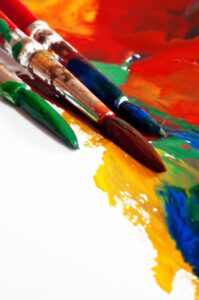
Emotions can be difficult to express. We may not know how to verbalize what we are feeling, or we may feel uncomfortable discussing our deepest emotions. This is where art therapy can be incredibly helpful. Art therapy can provide a way to express ourselves non-verbally, using colors, shapes, and images to convey what we are feeling. In this blog post, we will explore the benefits of art therapy for emotional expression.
1. Creativity as a form of expression
Art therapy can help individuals find fresh and creative ways to process and express their emotions. Art is a form of expression without words and can be especially helpful when someone cannot express themselves through verbal communication. The creative process of art therapy can help a person who struggles with emotional expression to loosen up the emotional barriers and tap into their subconscious mind. This process is therapeutic in and of itself, allowing individuals to understand their emotions better, get in touch with their thoughts and feelings, and obtain emotional catharsis through artistic expression.
2. Reflective Process
Art therapy doesn’t just allow participants to express themselves; the art-making process can be an opportunity for self-reflection and introspection. The art therapist may ask reflective questions to help identify themes and emotions present in the artwork. Participants can observe the changes in their art-making and become more open to understanding how their emotions impact everyday life.
3. Improved communication
Art therapy can improve communication skills by allowing a person to express themselves in a creative way. For individuals who may have difficulty with traditional forms of communication, using art can be a far more comfortable and authentic way to express themselves. Communicating through art can also help people connect with one another, whether in group settings or individual therapy.
4. Supportive of Recovery and Healing
Art therapy has been shown to have therapeutic applications for individuals struggling with mental health issues, emotion dysregulation, and trauma. When dealing with traumatic experiences, art therapy is non-invasive and supportive of an individual’s recovery. Art allows participants to convey their traumatic experience in a way that may be difficult to articulate verbally, which in turn can help prevent vicarious trauma. It can also be seen as a tool for relaxation and calm as individuals work through their emotions in a structured, safe way.
5. Promotes a sense of agencyEmotions can feel overwhelming and out of control. Art therapy can help people regain a sense of control of their emotional life. By choosing colors, shapes, and images, the participant exerts control over the outcome of the art-making. Art therapy treatments can help individuals feel a sense of agency in their work and in their emotional well-being. It gives them the power to choose the outcome that best represents their emotions.
Art therapy provides an avenue for people to express their emotions in a way that feels comfortable and authentic to them. With its non-verbal format, creative expression, and opportunities for reflection, it is an excellent tool for self-expression, communication, and healing. Art therapy, we believe, is one of the most inclusive tools in the mental health field today, with endless benefits for both the therapist and the patient. If you are struggling to express yourself emotionally or are dealing with mental health concerns, consider using art therapy as a vehicle for healing and transformation.


Follow Us